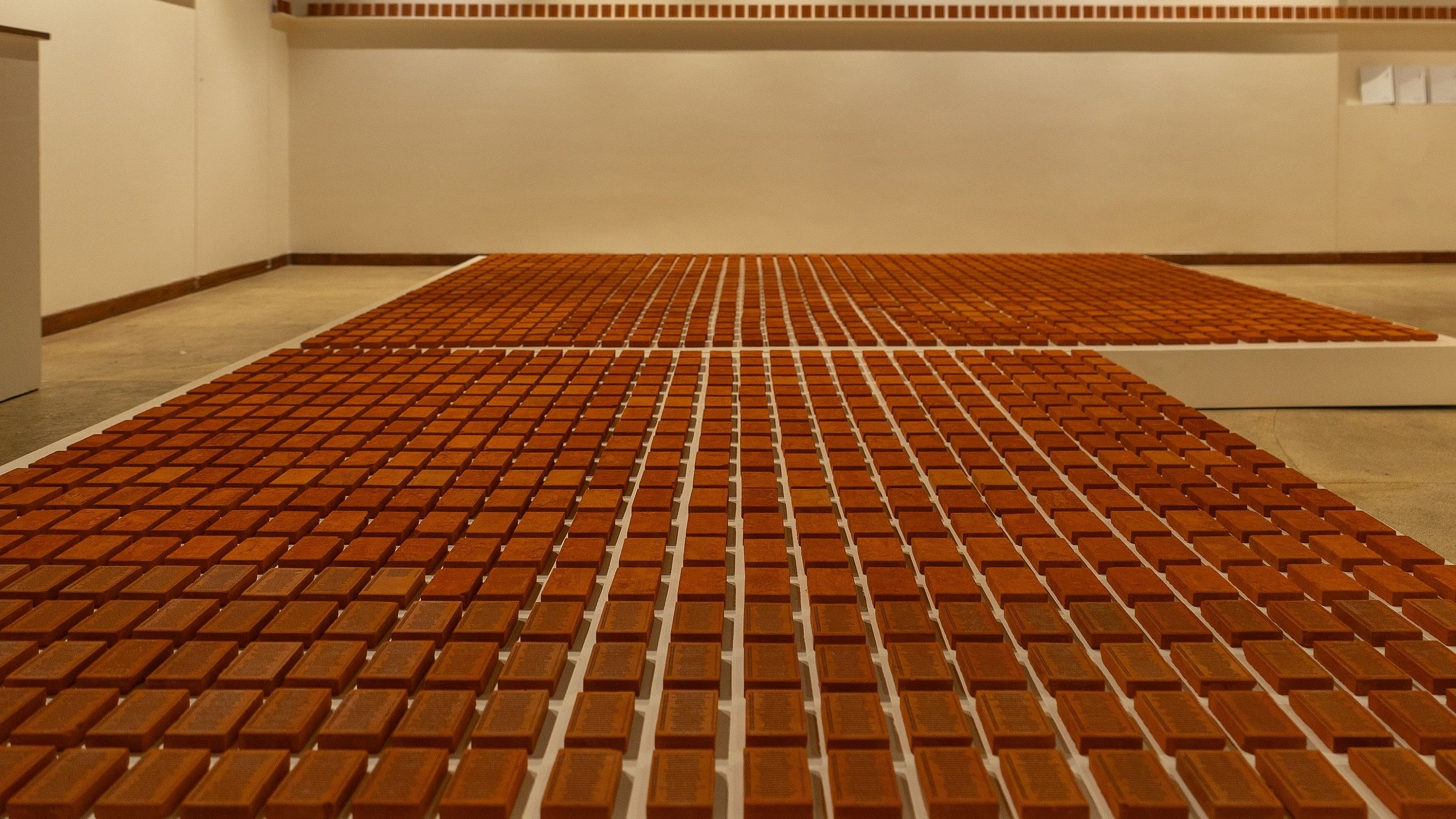
American artist and activist Alexis Rose’s art show at Mumbai’s Method Kala Ghoda, The Future Will Remember, is an exhibition showcasing archaeological records of the unfolding atrocities in Gaza. It is an act of bearing witness and active remembrance by acknowledging 6,747 individuals as confirmed by the Gaza Health Ministry in October last year, and the more than 36,000 unconfirmed individuals (as estimated by Euro-Med Human Rights Monitor) martyred in the last nine months.
Showcasing bricks engraved with names of those lost in the conflict, alongside three tapestries featuring over 800 GoFundMe campaign QR codes, the show allows viewers to take a moment to acknowledge and remember. These campaigns share stories of individuals and families seeking funds for safe evacuation or sustenance in Gaza. “The Future Will Remember is an invitation to engage with the future, a living archive to stand in the way of denial and dismissal, a promise to those lost that there will be no forgetting,” said Rose.
After only a few weeks of witnessing the world’s first live-streamed genocide, Rose was moved to create a ceremony for the dead. “When the denial of the death toll grew louder from my own home country, I felt the names offered to the public were no longer sufficient, and there is a need for a more durable record to resist these denials,” she recalled. So, she set about making bricks and began engraving their names. She continued making them, even when she ran out of names to fill them with, just to hold a place for the relatives who were lost beneath the rubble. “It was a vicarious funeral and a way for me to resist the attempt at erasure,” she added.
She handmade the first bricks with local clay in her studio in Mexico, then engraved and printed them in Arabic, with translation from a friend who was trapped in Gaza at the time. They worked together to raise money and she eventually managed to bring her friend to safety, but most of her family are still trapped inside the now-closed border. The second set of bricks, printed in English, is an attempt to proliferate these records across languages and continents. She worked collaboratively with local brick producers and engravers in Mumbai to produce them.
The exhibition also offers documentation and resources on the current situation in the region. The social media archive is a log of witnessing and reflecting on the unprecedented labour of Palestinians and their global allies in capturing and sharing the real-time documentation of their own genocide. The QR quilts are a collection of over 800 crowd-funding campaigns, containing stories of survival, perseverance, devastation and mutual aid, a reflection of the complex global dynamics of care in this struggle for survival.
The challenge for Rose was not one of availability, but durability. As censorship and algorithm dynamics emerged on social media, disadvantaging the content of Palestinian journalists, she was reminded that the digital space was deletable, bannable, biased and battered. “If we desire for the voices of the oppressed to be heard as loudly as possible, we need to preserve them away from our devices too, in forms that last past us, so that there can be no forgetting, no erasure, no silence,” she explained.
Some of Rose’s friends, sustainable designers and artists like her, have spent the last decade creating regenerative green infrastructure for their community in Gaza, sustainable agriculture projects, food sovereignty initiatives, rooftop gardens for kindergartens, recycled material community centres and parks for children with disabilities. “They were separated from their family when the border closed, forced to watch helplessly as everything they ever built was destroyed and their family starved in the north,” she said.
In addition to sculptural works, Rose creates sustainable socio-spatial interventions to support living futures. Currently, she is working on an interspecies regenerative bathing facility that filters water through human and non-human engagement. “It’s customisable to local building traditions, the challenges of various watersheds, relies on traditional ecological knowledge and indigenous technology, and doesn’t use mined metals or electricity,” she explained.
The exhibition runs till August 12 at Method Kala Ghoda, Mumbai.